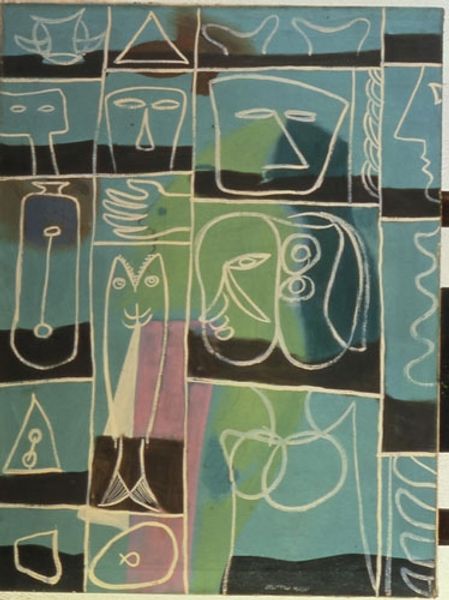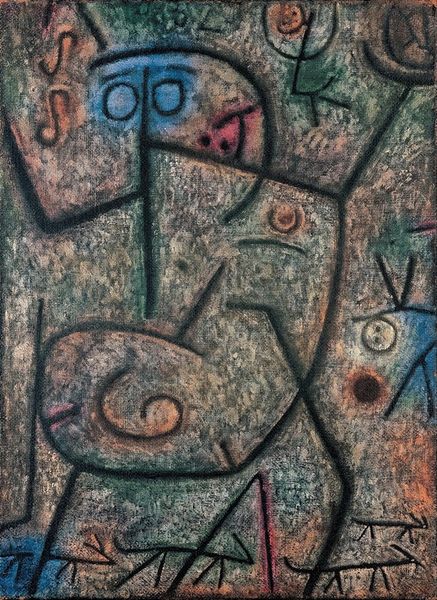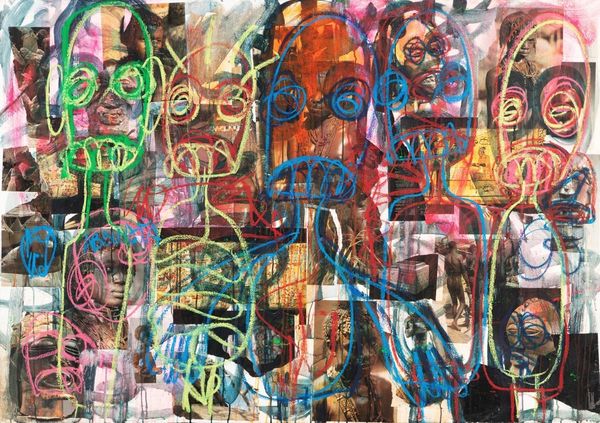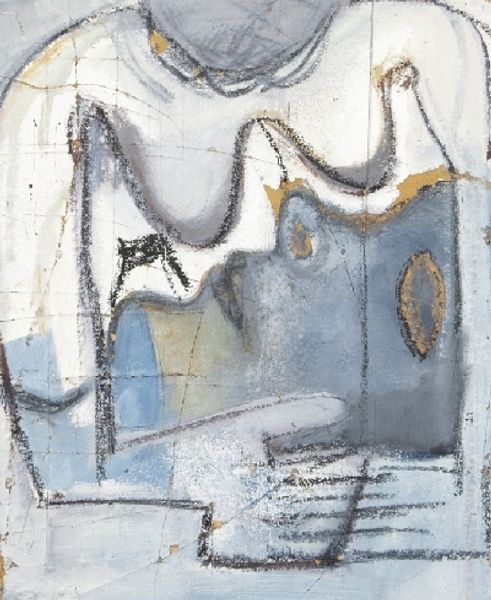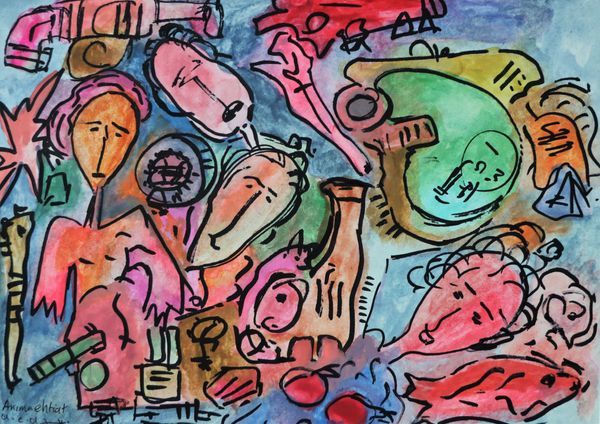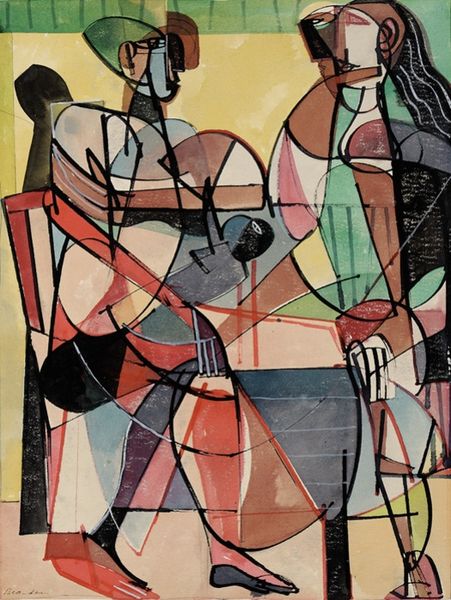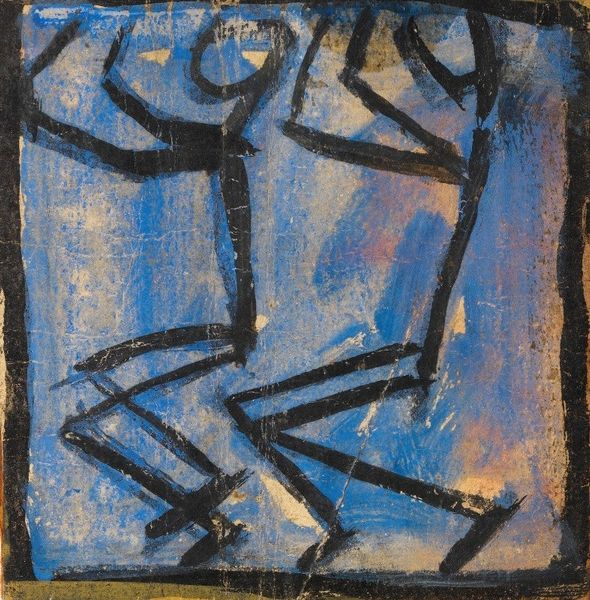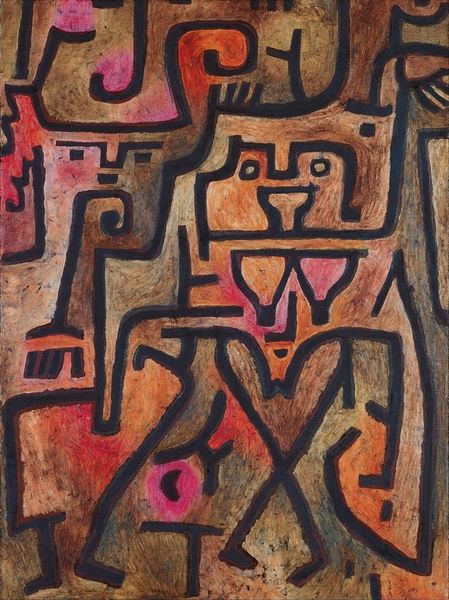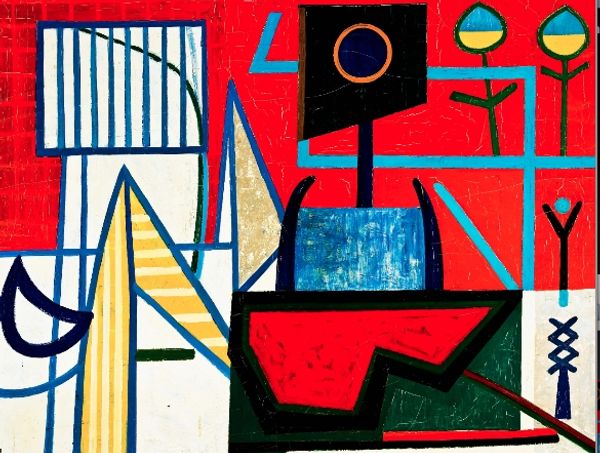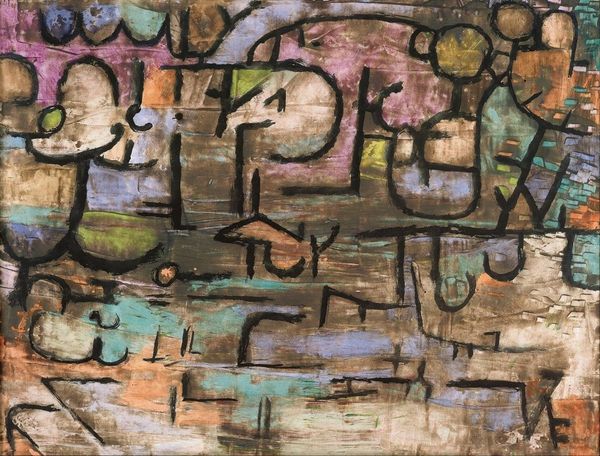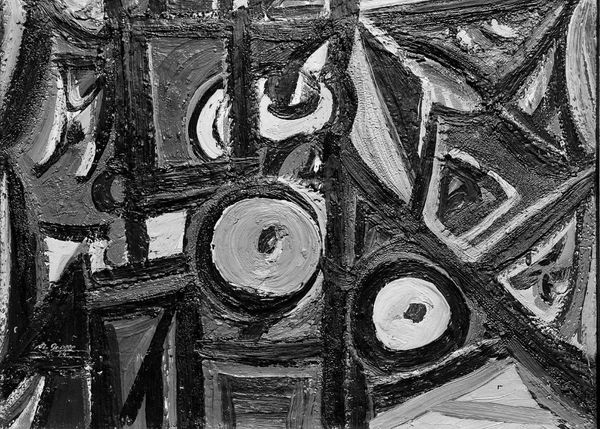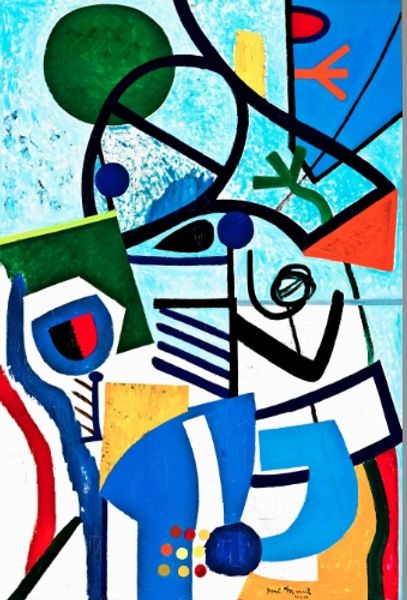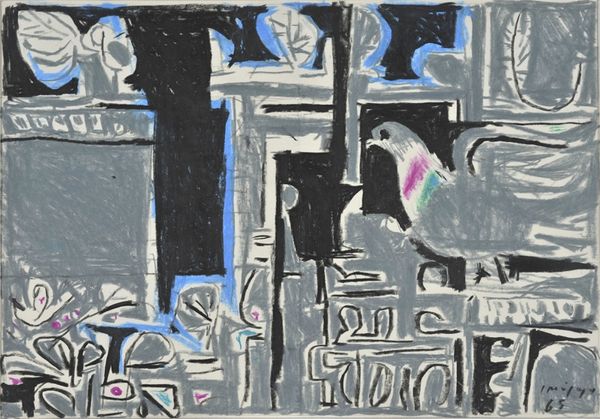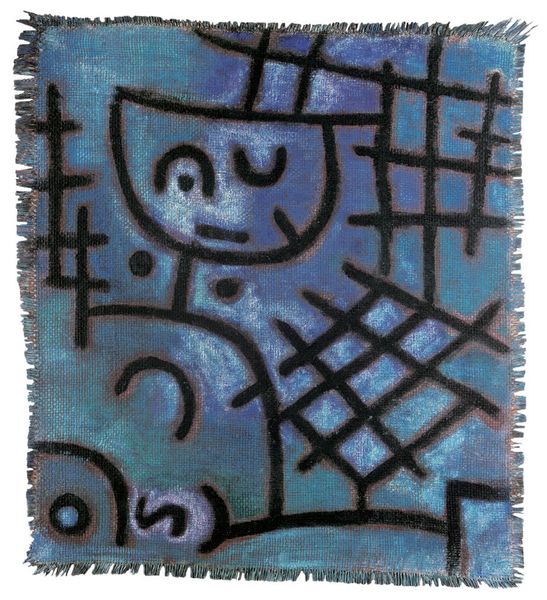
Dimensions: support: 914 x 1219 mm frame: 942 x 1247 x 60 mm
Copyright: © Adolph & Esther Gottlieb Foundation/VAGA, New York and DACS, London 2014 | CC-BY-NC-ND 4.0 DEED, Photo: Tate
Curator: Adolph Gottlieb’s "Labyrinth No. 2," part of the Tate Collections, presents us with a captivating arrangement of geometric forms and glyph-like symbols. Editor: It strikes me as a visual puzzle, a matrix of symbols rendered in muted, almost ethereal hues. Curator: Gottlieb’s work here reflects his interest in myth and the collective unconscious, drawing from diverse cultural symbols. Editor: The grid-like structure contains images that echo indigenous art and archaic scripts, blurring the lines between representation and abstraction. Do you think this framework intends to evoke confinement? Curator: The use of such symbols at that time was often read in the context of the world wars, exploring how primal narratives and ancient forms resurface during periods of upheaval. Editor: Right, and those symbols also speak to the struggle for meaning, for a system of order in a post-war world. Curator: It makes me think about how artists engage with history. Editor: I see the push and pull between representation and what lies beneath the surface.
Comments
tate 8 months ago
⋮
http://www.tate.org.uk/art/artworks/gottlieb-labyrinth-no-2-t03095
Join the conversation
Join millions of artists and users on Artera today and experience the ultimate creative platform.
tate 8 months ago
⋮
Gottlieb continued to make pictographs until 1953. (See 'The Alchemist', also in this room.) Many of them resembled early forms of communication, for example Egyptian hieroglyphs. One pictograph was titled 'Letter to a Friend'. Gottlieb's later pictographs show the influence of Paul Klee and a move away from an interest in myth. He stated that during the Second World War he 'just dropped the whole idea of classical mythology as subject matter and decided that the proper subject for me was subjective free-association of images and symbols which I couldn't explain.' Gallery label, October 1994
